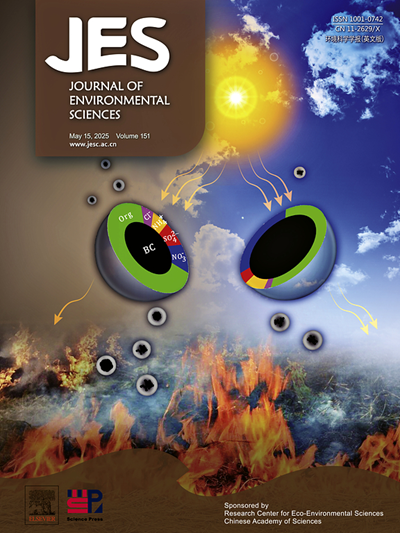微电解促进了质粒介导的抗生素耐药基因在微生物群落水平上的水平转移
IF 5.9
2区 环境科学与生态学
Q1 ENVIRONMENTAL SCIENCES
引用次数: 0
摘要
质粒介导的抗生素耐药性在全球不断升级的传播对全球健康构成了巨大威胁。偶联是细菌群体间水平基因转移的关键机制,促进了抗生素耐药基因(ARGs)的传播。微电解作为一种降低废水中抗生素浓度的有效策略已引起人们的关注,但其对ARG水平转移的潜在影响在很大程度上仍未被探索。这项全面的研究揭示了微电解不仅影响而且显著加速了携带arg质粒的共轭转移。值得注意的是,这一现象在微生物群落规模上得到了证实,强调了其生态相关性。令人担忧的是,该研究强调了肠道微生物在电解刺激下容易获得抗生素耐药性,这对动物和人类健康都构成了更大的风险。深入研究,该研究阐明了负责这种增强共轭转移的潜在机制。研究表明,微电解增加了交配能力细胞的丰度,触发活性氧的产生,造成适度的膜损伤,并上调了对结合至关重要的基因的表达。这些发现共同有助于更深刻地理解在采用微电解技术处理废水的情况下,ARGs的环境传播动态和相关的公共卫生影响。本文章由计算机程序翻译,如有差异,请以英文原文为准。
Microelectrolysis facilitated the plasmid-mediated horizontal transfer of antibiotic resistance genes at the microbial community level
The escalating global dissemination of plasmid-mediated antibiotic resistance poses a formidable threat to global health. Conjugation stands as a pivotal mechanism for horizontal gene transfer among bacterial populations, facilitating the spread of antibiotic resistance genes (ARGs). Microelectrolysis has garnered attention as an efficacious strategy for mitigating antibiotic concentrations in wastewater, yet its potential impact on ARG horizontal transfer remain largely unexplored. This comprehensive investigation unveils that microelectrolysis not only influences but significantly accelerates the conjugative transfer of ARG-harboring plasmids. Remarkably, this phenomenon is corroborated at the microbial community scale, underscoring its ecological relevance. Alarmingly, the study highlights the vulnerability of intestinal microorganisms to acquire antibiotic resistance under electrolytic stimulation, posing heightened risks to both animal and human health. Delving deeper, the study elucidates the underlying mechanisms responsible for this enhanced conjugative transfer. It reveals that microelectrolysis augments the abundance of mating-competent cells, triggers the generation of reactive oxygen species, inflicts modest membrane damage, and upregulates the expression of genes critical for conjugation. These findings collectively contribute to a more profound comprehension of the environmental dissemination dynamics and associated public health implications of ARGs in the context of wastewater treatment employing microelectrolytic technologies.
求助全文
通过发布文献求助,成功后即可免费获取论文全文。
去求助
来源期刊

Journal of Environmental Sciences-china
环境科学-环境科学
CiteScore
13.70
自引率
0.00%
发文量
6354
审稿时长
2.6 months
期刊介绍:
The Journal of Environmental Sciences is an international journal started in 1989. The journal is devoted to publish original, peer-reviewed research papers on main aspects of environmental sciences, such as environmental chemistry, environmental biology, ecology, geosciences and environmental physics. Appropriate subjects include basic and applied research on atmospheric, terrestrial and aquatic environments, pollution control and abatement technology, conservation of natural resources, environmental health and toxicology. Announcements of international environmental science meetings and other recent information are also included.
 求助内容:
求助内容: 应助结果提醒方式:
应助结果提醒方式:


